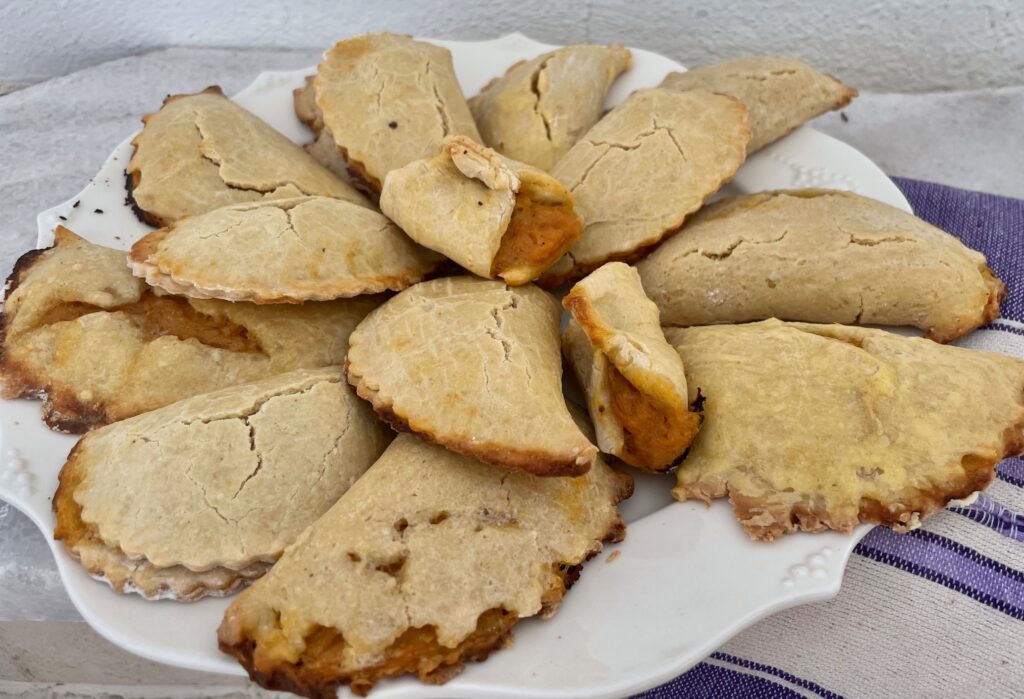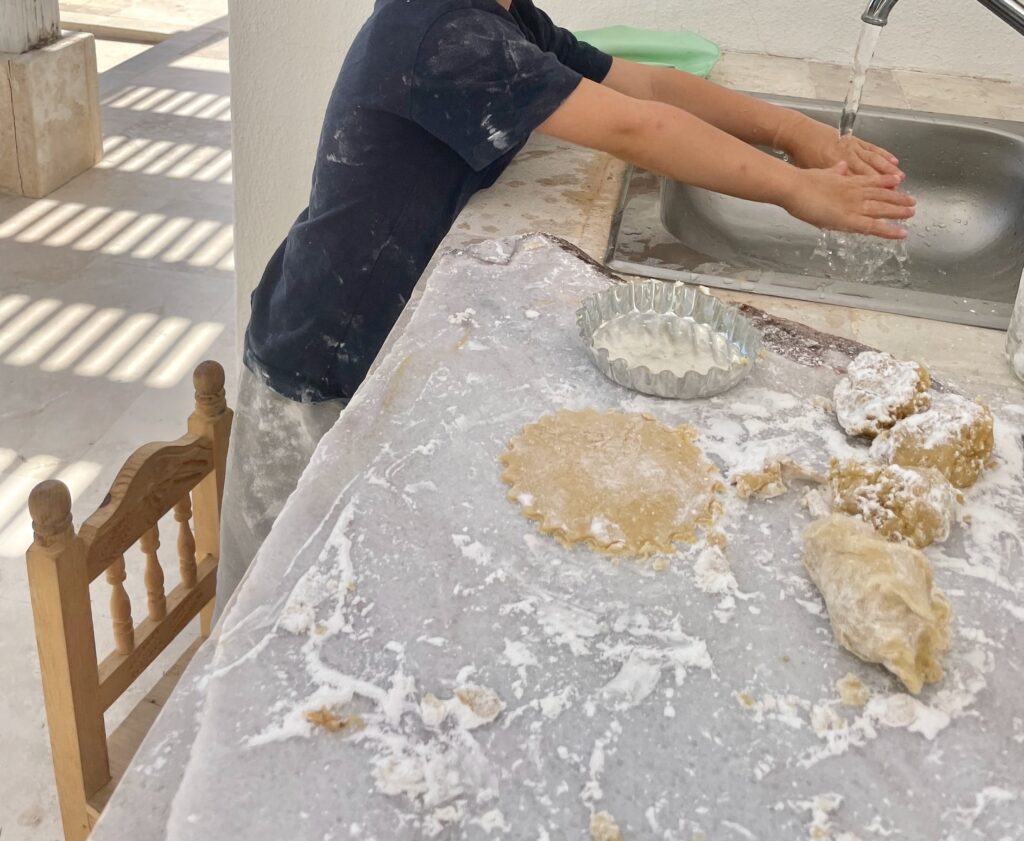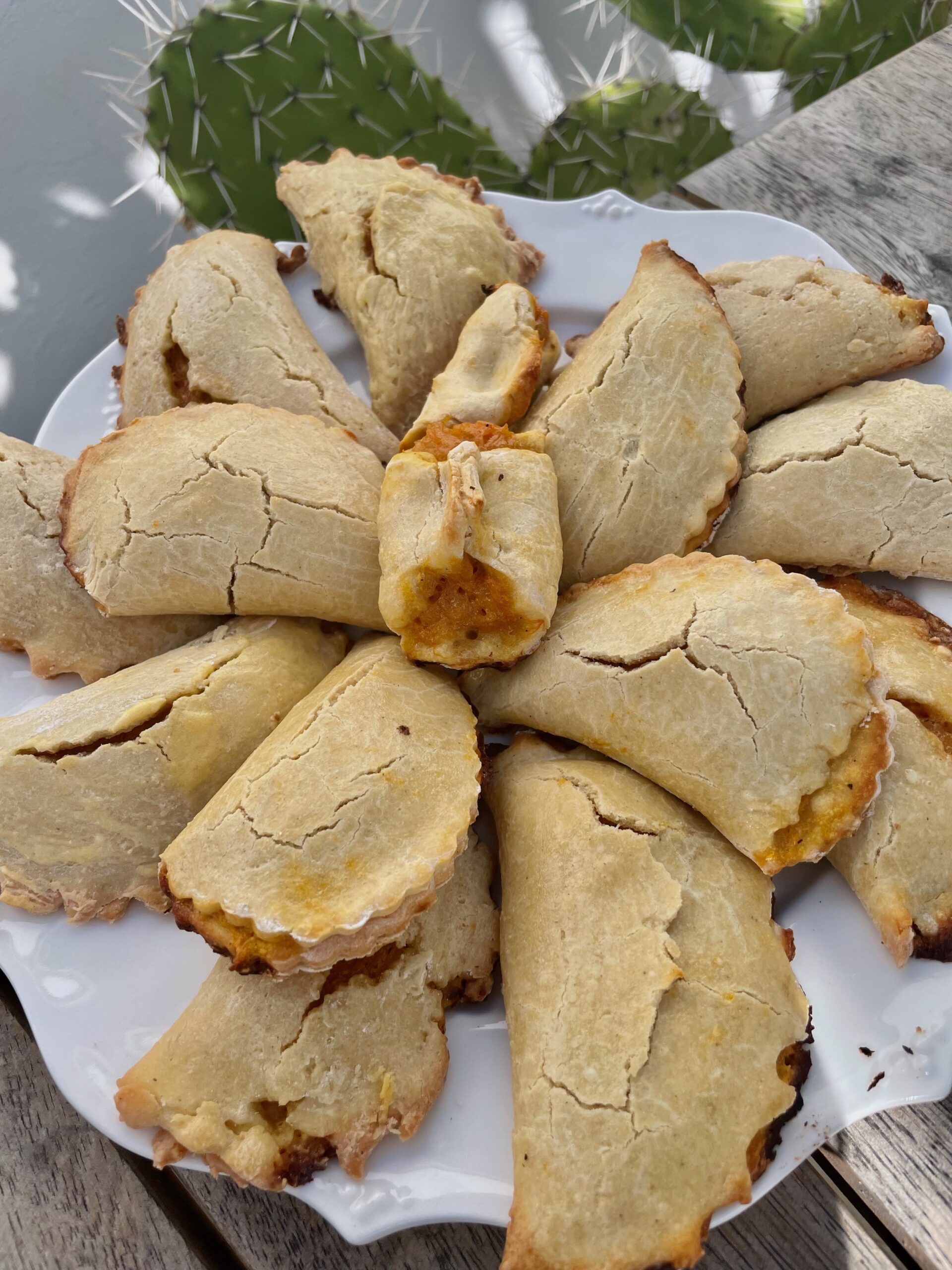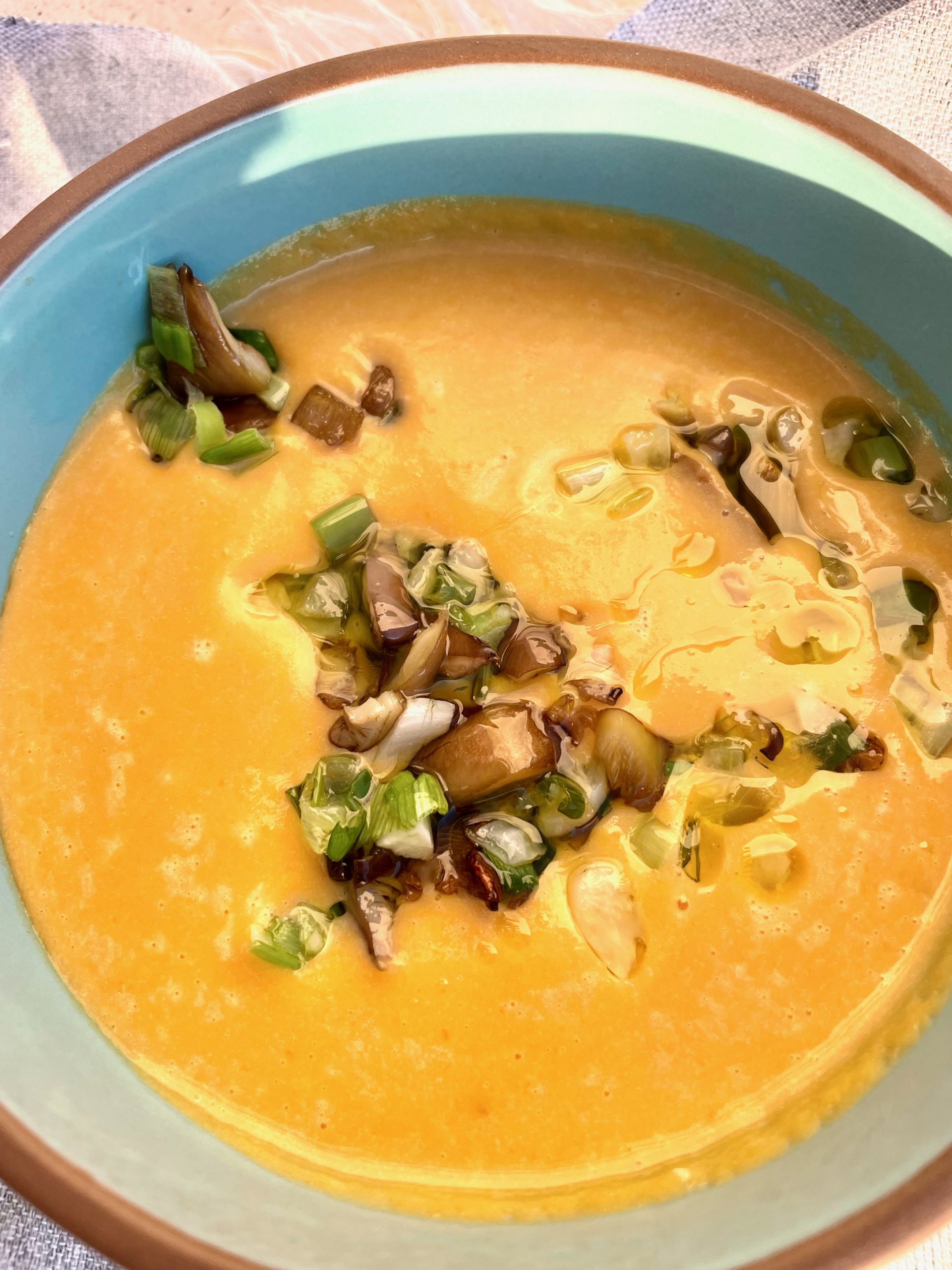
This dough can be made with any of your favorite fillings. A good kitchen organization hack is to make the dough a day ahead of time when you are also making a meal or cleaning. Then it feels easier to make the filling and do the rolling and baking. You can also make your filling a day ahead, try making a large batch of something that can be used both as a filling and as part of a meal. For example, a large mushroom stir fry, with a few herbs, a creamer like coconut milk and a bit of a thickener can be topped over rice alongside other vegetables, and then used the next day as a filling for the recipe.
Why this dough is healthier than regular wheat flour dough: it is not just about gluten
This is not your empanada recipe from your local bakery. Here is why:
- The replacement of wheat flour with the gluten free blend lowers the amount of glyphosate (an very toxic herbacide) in your diet because wheat flour tends to be much higher in glyphosate than other food crops. Often people are sensitive to the high levels of herbicides or pesticides that comes from eating wheat, instead of the wheat itself. When a food is high in chemicals and part of several meals in a day it is going to be a greater contribution to your toxic load.
- The gluten free flour blend is less inflammatory to the gut. Wheat flour, even non-gmo wheat flour has been bred over the past 50 years to be much higher in the gluten protein to allow for easier baking. The original wheat of biblical times and before was a hard red small wheat kernel and was much lower in gluten. Often people are more reactive to wheat because our gut has not evolved to digest such high levels of gluten, even if you are not celiac.
- The combination of grain and the bean protein from garbanzo and sorgum/rice flours provides all the essential amino acids which makes a complete protein. This provides the body with all the proteins it needs and the higher amounts of protein is also stabilizing to the blood sugar than the carbohydrate rich wheat flour.
- Wheat flour only provides high levels of the amino acid methionine instead of all the amino acids. Too high levels of methionine can contribute to inflammation, especially if you are vegan or vegetarian and are not consuming sufficient B12 levels.
- This flour mixture uses tapioca flour instead of corn starch like that is seen in many gluten-free flour blends. Although neither are “whole foods” and have a relatively high starch with a high glycemic index, tapioca flour is made directly from the manioca root. Corn starch on the other hand is an extract of corn and often it is synthesized with a large amount of chemicals. Think of it this way, tapioca flour/starch can be made if your a woman living in a grass and mud hut with her fire, rudimentary materials, and the sun. Corn starch needs a laboratory to be made. We do not want to eat food made in a laboratory….it is not real food.

Gluten Free Empanada Dough
Equipment
- Electric Mixer
- Rolling pin or glass jar
- Cookie cutter or ball jar lid
Ingredients
- 2/3 c tapioca flour
- 1/2 c sorghum flour
- 1/2 c garbanzo flour
- 1/3 c brown rice flour
- 1 t guar gum leave out if making for babies under 4
- 1 T sugar
- 2 t baking powder
- 1 t salt
- 2 eggs
- 1 T sherry, apple cider vinegar or whiskey
- 4 T olive oil extra virgin
- 2 T cold water
Instructions
- Blend the dry ingredients in your mixer.
- Add the egg and turn mixer on low as you add the other ingredients, except water.
- Evaluate your dough and if it does not completely come together in a moist dough, add water 1 T at a time until you reach a moist ball.
- Let dough rest one hour at room temperature. This step is vital. If you need more time place in the fridge in a sealed container for up to 2 days. Do not wrap in Saran Wrap or plastic wrap or foil. Rather place in a silicone bag (still not the best but better than plastic wrap), or place in a glass or stainless covered container.
- Make egg wash. Roll out thin and use a circle cutter or a glass to get the desired size
- Add filling; fold and crimp with the tines of a fork. Brush with egg wash;
- Fill and bake at 350 F until the edges are golden brown. It should be around 20-35 minutes, but will depend on your filling and how large your empanadas are.
Notes
If you want a smaller recipe for 4-5 large empanadas or 6-7 small ones:
1 c GF flour blend
1/2 t guar gum
1 egg (plus 1 more for an egg wash)
2 T avocado oil
1 T sugar
1 t baking powder
1 T sherry or whisky, dry
4 T cold water
1/2 t sea salt
What Chemicals Are Used to Make Corn Starch?
- Sulfur Dioxide (SO2): Sulfur dioxide may be used during the steeping process, which involves soaking the corn kernels in water to soften them and begin the separation of starch from other components. SO2 helps to prevent microbial growth and control pH during steeping.
- Hydrochloric Acid (HCl) or Sulfuric Acid (H2SO4): Acid solutions may be used in the refining process to adjust pH levels, remove impurities, and aid in the separation of starch from protein and fiber components.
- Sodium Hydroxide (NaOH) or Sodium Carbonate (Na2CO3): Alkaline solutions may be used for neutralization and pH adjustment during various stages of starch processing.
- Bleaching Agents: Bleaching agents such as hydrogen peroxide (H2O2) or sodium hypochlorite (NaClO) may be used to remove pigments and improve the whiteness of the starch.
- Antifoaming Agents: Antifoaming agents may be added to control foam formation during processing steps such as centrifugation and drying.
- Enzymes: Enzymes may be used to break down complex carbohydrates and facilitate starch extraction. Common enzymes used include alpha-amylase, which hydrolyzes starch molecules, and protease, which helps to break down proteins.
- Preservatives: Preservatives may be added to the final starch product to prevent microbial spoilage and extend shelf life.


TapIOCA Starch is Made with Mechanical methods rather than Chemical.
In the production of tapioca starch, the process typically involves mechanical extraction and purification methods, rather than the use of chemical solvents or additives. Tapioca starch is derived from the cassava root (Manihot esculenta), which undergoes several steps to extract and refine the starch. These steps generally include:
- Washing: The harvested cassava roots are thoroughly washed to remove dirt, debris, and any surface contaminants.
- Peeling: After washing, the outer peel of the cassava roots is removed to expose the starchy inner flesh.
- Grating or Shredding: The peeled cassava roots are grated or shredded into small pieces to increase the surface area for starch extraction.
- Pulping: The grated cassava is then pulped or crushed to release the starch from the fibrous pulp.
- Separation: The starch-water slurry obtained from pulping undergoes a separation process to separate the starch granules from the fibrous pulp and other insoluble components. This separation is typically achieved through a combination of sedimentation, centrifugation, and filtration.
- Washing and Purification: The separated starch is washed multiple times to remove impurities, such as soluble proteins, fibers, and residual chemicals. This washing process helps to purify the starch and improve its quality.
- Drying: The washed starch is then dried to remove excess moisture and achieve the desired moisture content for storage and further processing. Drying may be accomplished using techniques such as air drying, drum drying, or flash drying.
- Milling and Sifting: Once dried, the tapioca starch is milled into a fine powder and sifted to ensure uniform particle size and quality.







